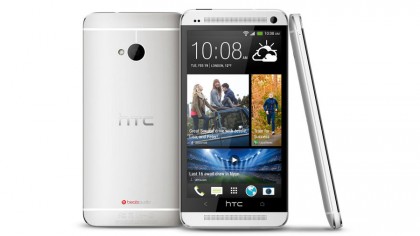How the mobile phone destroyed the MP3 player
The phones that gave us the best sound
HTC One
The iPhone and its successors ruled the roost for a long time and in many ways they still do. But they're not the only phones making waves in music. The HTC One really puts a focus on music too.
Most obviously it has dual front facing BoomSound speakers. Not only are they larger than most phone speakers, but they are on the front, allowing the sound waves to come towards you when holding the phone. It sounds obvious but no-one else is doing it and it makes a big difference as you can keep the phone face up and still get the full audio experience.
That's especially important when watching something, but even when just listening it's advantageous as most people tend to place their phones face up.

With built in amplifiers allowing for loud stereo sound, and coupled with Beats Audio the HTC One delivers surprisingly meaty bass.
HTC has thought carefully about internal speakers and Burson told us that while headphones have been the portable speaker of choice for a decade or so "there could be a shift in the future as people rediscover the desire to experience music socially and in the ambient nature music is rooted in."
In other words there could be a change coming where, as phone speakers get better, people change the way they listen to music, with a phone's internal speakers being used in preference to headphones.
The overall sound delivery on the HTC One is dubbed 'BoomSound'. HTC enhanced both the high and low end of the audio spectrum, allowing the phone to render frequencies that other handsets are unable to and giving it impressive bass in the process.
Get daily insight, inspiration and deals in your inbox
Sign up for breaking news, reviews, opinion, top tech deals, and more.
Together with the powerful stereo speakers, this makes it possible to listen to music on the HTC One without headphones and without sacrificing too much sound quality in the process.
Burson even went so far as to say that "internal phone speakers have the potential to become portable speakers themselves."
Yong-hyuk Na held a similar opinion, saying that "in the future phone speakers will be capable of replacing portable speakers."
Though he did follow this up by saying that "as with consumers who choose to purchase surround sound systems to enhance the high-quality audio provided by TVs, there may still be consumers who want to further boost the experience provided by smartphones by purchasing external speakers." So however good phone speakers get portable speakers are likely here to stay too.
LG G2
The LG G2 is arguably the current pinnacle of smartphone audio; while the HTC One aims to deliver room filling sounds through its built in speakers, the LG G2 is much better through headphones.
While most phones are happy to just work with what Android gives them, LG actually modified the sound architecture that Android uses, allowing the LG G2 to deliver hi-res 24 bit 192 kHz sound, which is a higher sampling rate and bit depth than any of its smartphone competition and higher even than CDs. That's a big step, allowing the LG G2 to play truly high quality audio files.
Yong-hyuk Na believes that the greatest improvement needed in smartphone audio is "the delivery of the actual sound in analogue. Many consider CD sound at 16bit, 44.1kHz to be perfect, because it is the current standard in the music industry."
"However, CDs do not delicately reproduce the frequency of the original sound, resulting in inferior sound when delivered to users. 24/192 playback delivers more accurate and precise sound compared to CDs and provides profound sound quality" and that's exactly what LG has achieved with the LG G2.
The LG G2 supports FLAC and WAV files for lossless audio, allowing users to listen to music in as close to analogue quality as possible. Additionally it uses the Qualcomm Snapdragon 800 processor that according to Yong-hyuk Na strengthens the device's sound and multimedia capabilities and "offers the best sound quality for mobile devices".
James is a freelance phones, tablets and wearables writer and sub-editor at TechRadar. He has a love for everything ‘smart’, from watches to lights, and can often be found arguing with AI assistants or drowning in the latest apps. James also contributes to 3G.co.uk, 4G.co.uk and 5G.co.uk and has written for T3, Digital Camera World, Clarity Media and others, with work on the web, in print and on TV.